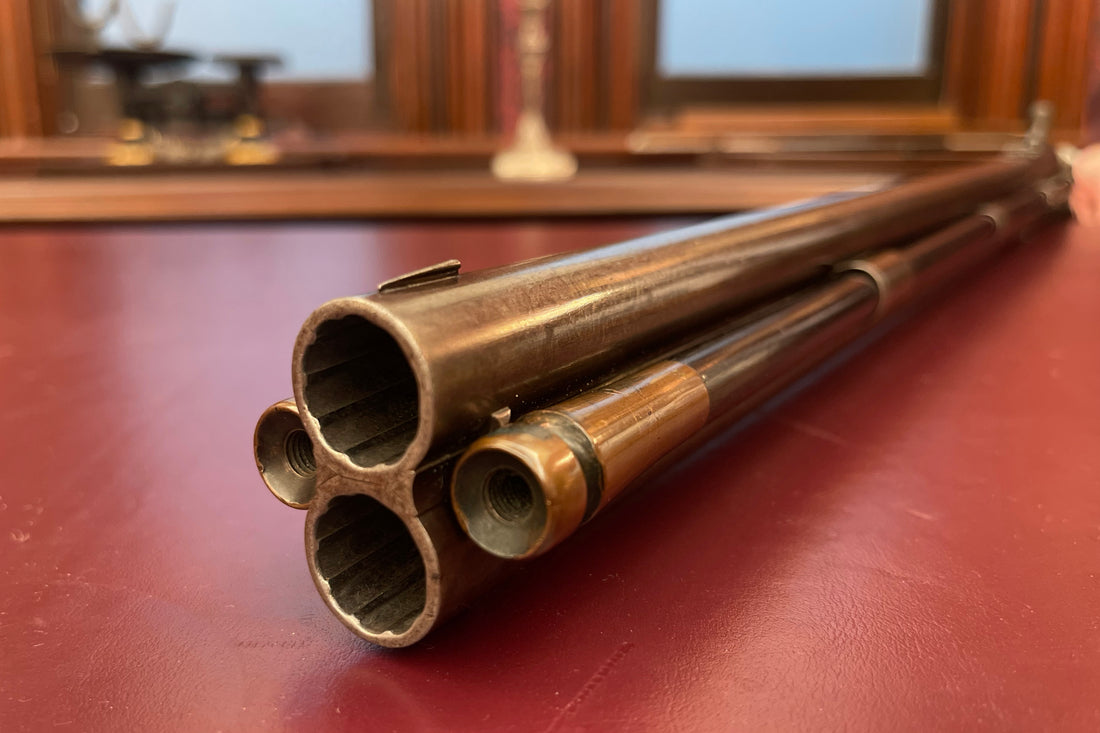In the history of James Purdey & Sons, there are certain key dates that figure prominently in the story of the company. Many, such as the introduction of both Purdey Bolts and Beesley’s action, are well-known. Others, less so, and this encompasses one that we were recently able to purchase for our archive at Audley House – the first Over-and-Under to appear in our records, Purdey No. 3806. It is much older than you might think!
While the story of British Over-and-Under guns usually starts in the early 20th century, muzzle-loading examples also exist. No. 3806 is one of these – a 16-Bore Percussion Double Rifle, which was sold 180 years ago, in 1843. Aside from one other example built in the 1860s, it would be 1925 before the words ‘Over-and-Under’ would reappear in our records again, and then only as a shotgun.
Rifles hold a particular place in the story of James Purdey. The first Purdey was a keen rifle marksman and is known to have hand-regulated and sighted each of his rifles himself. Around the same time as he completed No. 3806 he also claimed another London first, when he fitted telescope sights to both a rifle and a double-barrelled pistol for their inventor, David Davidson. His son, James Purdey the Younger, was apprenticed to his father in 1843, meaning that he would have seen this rifle being constructed. In the 1850s father and son worked together to create their famous Express rifle, the name still used to describe high-velocity rifles today.
The operation of No. 3806 is quite unusual by today’s standards, as the rifle has only one lock. To fire the second barrel, the lock must be half-cocked before a lever in front of the trigger-guard is pulled, and the barrels rotated 180°. This appears to be based on the Wender system, which was developed over a century earlier. Each barrel has three leaf-sights, for distances of 50, 100 and 150 yards, and there are two ramrods, one on each side. The rifle has been fitted with a hair-trigger, still functioning perfectly after nearly two centuries, and a pistol grip is formed as part of the trigger-guard. The stock is also inset with a beautifully engraved patch-box, to keep them to hand for reloading in the field.
Although to modern eyes the calibre of this rifle seems quite large, this was done to overcome the low velocity generated by black powder. As such, this was built as a deer rifle, where the hair trigger would be of more use. It was originally purchased by Charles Molyneux, 3rd Earl of Sefton, who had already purchased a second-hand single-barrelled rifle, No. 2293, in 1833, which was also fitted with a hair trigger. His new rifle cost £68 5s, about £10 more than a double-barrelled shotgun of the day. It offered him the benefit of a relatively quick follow-up shot, rather than needing to reload or swap guns with a loader, plus the same compact sight profile of his original rifle.
Molyneux had originally sat as an MP for Lancashire before inheriting his father’s title and seat in the House of Lords in 1838. His family home was Croxteth Hall in West Derby, now a suburb of Liverpool, although his account address was his house at 37 Belgrave Square. It was his son, the 4th Earl, who built Abbeystead House as ‘a private shooting lodge on a grand scale’. There, on 12 August 1915, a team of eight guns shot 1,464½ brace of grouse, a record that still stands today.
Though the No. 3806 Over-and-Under never seems to have been as popular a design as Purdey’s Side-by-Side double rifles – in fact only one other was completed, No. 8348, in 1871 for the second Aga Khan (which is now believed to be lost) – it tells an important part of the Purdey story, and makes for a worthy addition to our Audley House collection.
